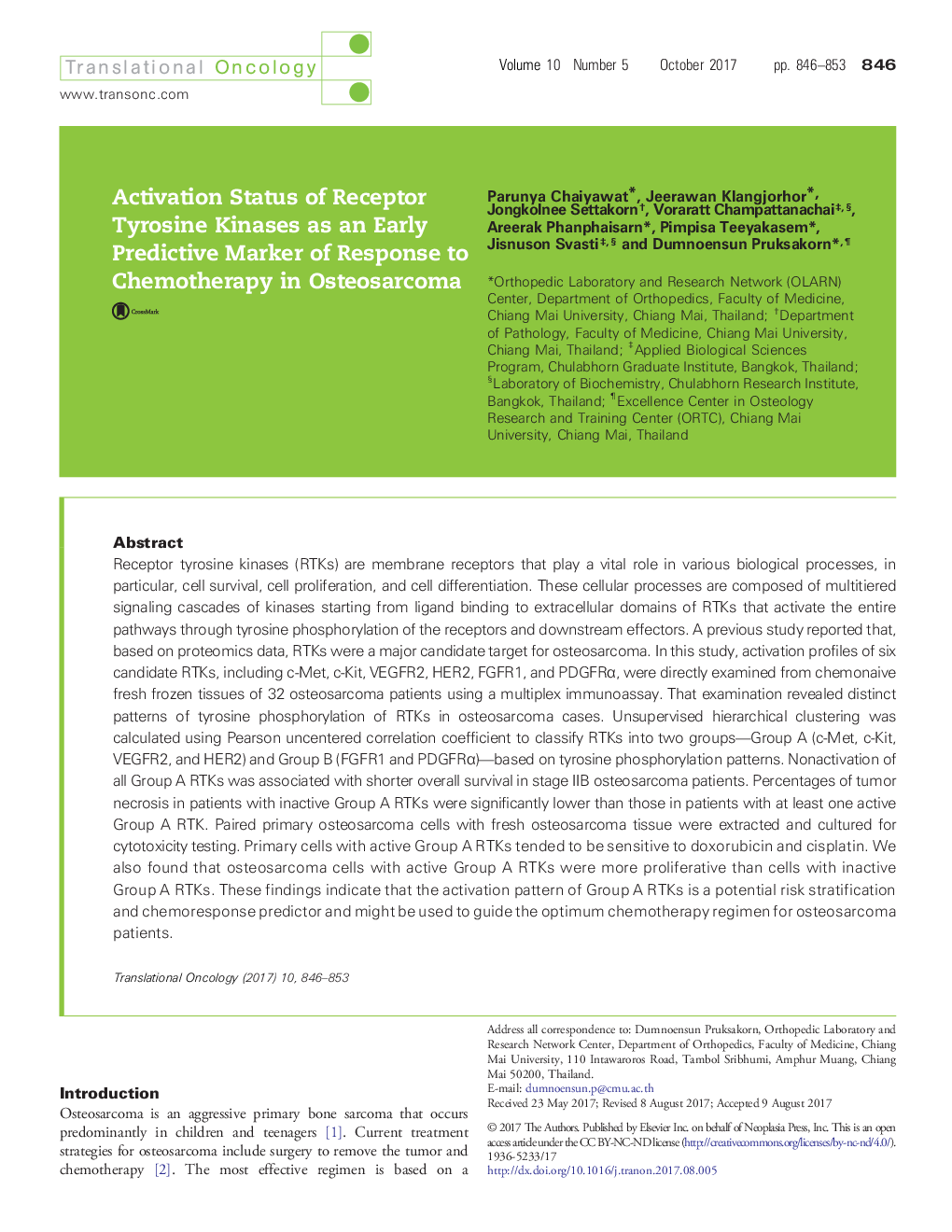| کد مقاله | کد نشریه | سال انتشار | مقاله انگلیسی | نسخه تمام متن |
|---|---|---|---|---|
| 5530074 | 1401714 | 2017 | 8 صفحه PDF | دانلود رایگان |
Receptor tyrosine kinases (RTKs) are membrane receptors that play a vital role in various biological processes, in particular, cell survival, cell proliferation, and cell differentiation. These cellular processes are composed of multitiered signaling cascades of kinases starting from ligand binding to extracellular domains of RTKs that activate the entire pathways through tyrosine phosphorylation of the receptors and downstream effectors. A previous study reported that, based on proteomics data, RTKs were a major candidate target for osteosarcoma. In this study, activation profiles of six candidate RTKs, including c-Met, c-Kit, VEGFR2, HER2, FGFR1, and PDGFRα, were directly examined from chemonaive fresh frozen tissues of 32 osteosarcoma patients using a multiplex immunoassay. That examination revealed distinct patterns of tyrosine phosphorylation of RTKs in osteosarcoma cases. Unsupervised hierarchical clustering was calculated using Pearson uncentered correlation coefficient to classify RTKs into two groups-Group A (c-Met, c-Kit, VEGFR2, and HER2) and Group B (FGFR1 and PDGFRα)-based on tyrosine phosphorylation patterns. Nonactivation of all Group A RTKs was associated with shorter overall survival in stage IIB osteosarcoma patients. Percentages of tumor necrosis in patients with inactive Group A RTKs were significantly lower than those in patients with at least one active Group A RTK. Paired primary osteosarcoma cells with fresh osteosarcoma tissue were extracted and cultured for cytotoxicity testing. Primary cells with active Group A RTKs tended to be sensitive to doxorubicin and cisplatin. We also found that osteosarcoma cells with active Group A RTKs were more proliferative than cells with inactive Group A RTKs. These findings indicate that the activation pattern of Group A RTKs is a potential risk stratification and chemoresponse predictor and might be used to guide the optimum chemotherapy regimen for osteosarcoma patients.
Journal: Translational Oncology - Volume 10, Issue 5, October 2017, Pages 846-853
